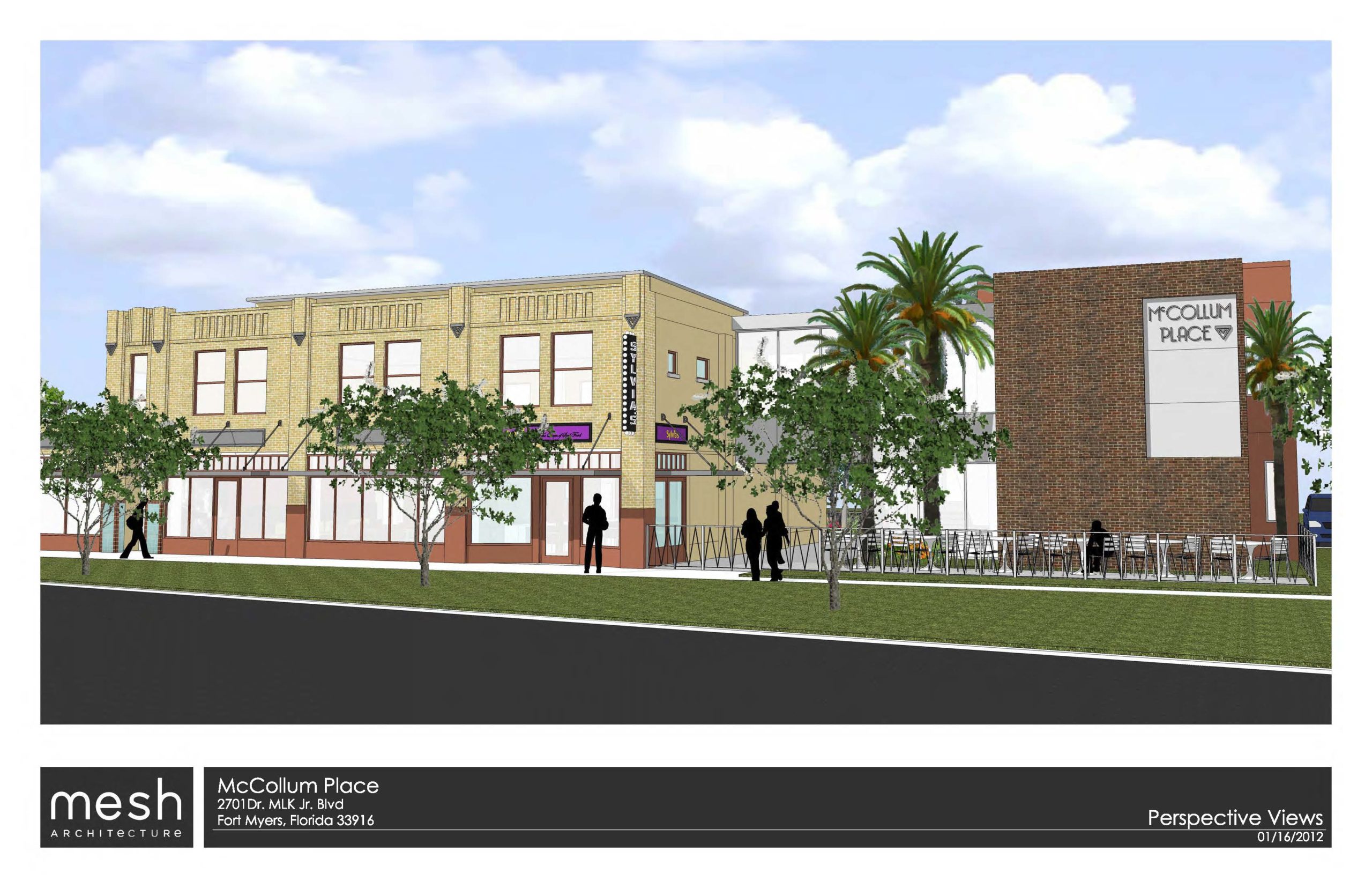 Once it had been alive with music—and not just any music, but the best of the Jazz Era: Louis Armstrong, Duke Ellington, Count Basie, B.B. King.
Once it had been alive with music—and not just any music, but the best of the Jazz Era: Louis Armstrong, Duke Ellington, Count Basie, B.B. King.
Fort Myers’ McCullom Hall was a popular spot on the Chitlin’ Circuit, a network of clubs where black musicians performed during segregation. Upstairs was the dance floor; downstairs was home to thriving black-owned businesses. In its time, it was considered the heart of the Dunbar community.
“Oh, I just loved to dance. My mother would let me go to the dances and I just loved it. I would get out of my sick bed to go to a dance,” one resident told the local Black History Society as part of an oral history project. Another called it “the nicest place on Anderson Avenue,” the former name for Dr. Martin Luther King Jr. Boulevard.
Today, it’s a tired shell of a building, boarded and silent.
But not for much longer.
A restoration project years in the making went full-throttle Thursday morning. Elected leaders, city representatives, residents, and representatives of construction and architectural firms ceremoniously kicked off phase 1 of the exterior work, which will transform the facades facing Dr. Martin Luther King Jr. Boulevard and Cranford Avenue. Once complete, says Michele Hylton-Terry, the project manager for the city’s Community Redevelopment Agency, it’ll look like it did in the early and mid-1900s.
“All the features that made the building special will be returned,” she says. A $500,000 state grant is paying the bulk of the exterior work. The CRA is applying for additional funds. When complete, the building will again house businesses on the bottom floor. The top floor will be open for community events or available to rent for private functions.
 McCullom Hall was built in 1938 by Clifford McCullom Sr. and his wife, Gertrude. Around town, it was called “Buck Hall,” Clifford’s nickname. During World War II and into the 1950s, it was the USO for black servicemen; later, in the late ’90s, the upstairs was converted into a rooming house. In 2007, the city bought it from the McCulloms as the cost to rehabilitate the place exceeded the family’s means.
McCullom Hall was built in 1938 by Clifford McCullom Sr. and his wife, Gertrude. Around town, it was called “Buck Hall,” Clifford’s nickname. During World War II and into the 1950s, it was the USO for black servicemen; later, in the late ’90s, the upstairs was converted into a rooming house. In 2007, the city bought it from the McCulloms as the cost to rehabilitate the place exceeded the family’s means.
“It will become a beautiful place again,” says Caroline McCullom, Clifford and Gertrude’s daughter-in-law.
The place is rife with symbolism. During the USO days, a rope used to separate blacks and whites (who’d go to McCullom in spite of having their own such gathering spot) until the music started, and people would knock it down. Attendees would stick with their own groups on the dance floor, but they were on the floor together, and that was a start.
In a sad way, too, it’s come to represent the plight of the Dunbar community, which is struggling with crime, poverty and a lack of business opportunities. Saving McCullom, leaders hope, is analogous with saving the neighborhood.
In time, says Mayor Randy Henderson, McCullom will be a “place of energy and life and vitality right here on Dr. Martin Luther King Boulevard.”
We’re eager to see that happen.





